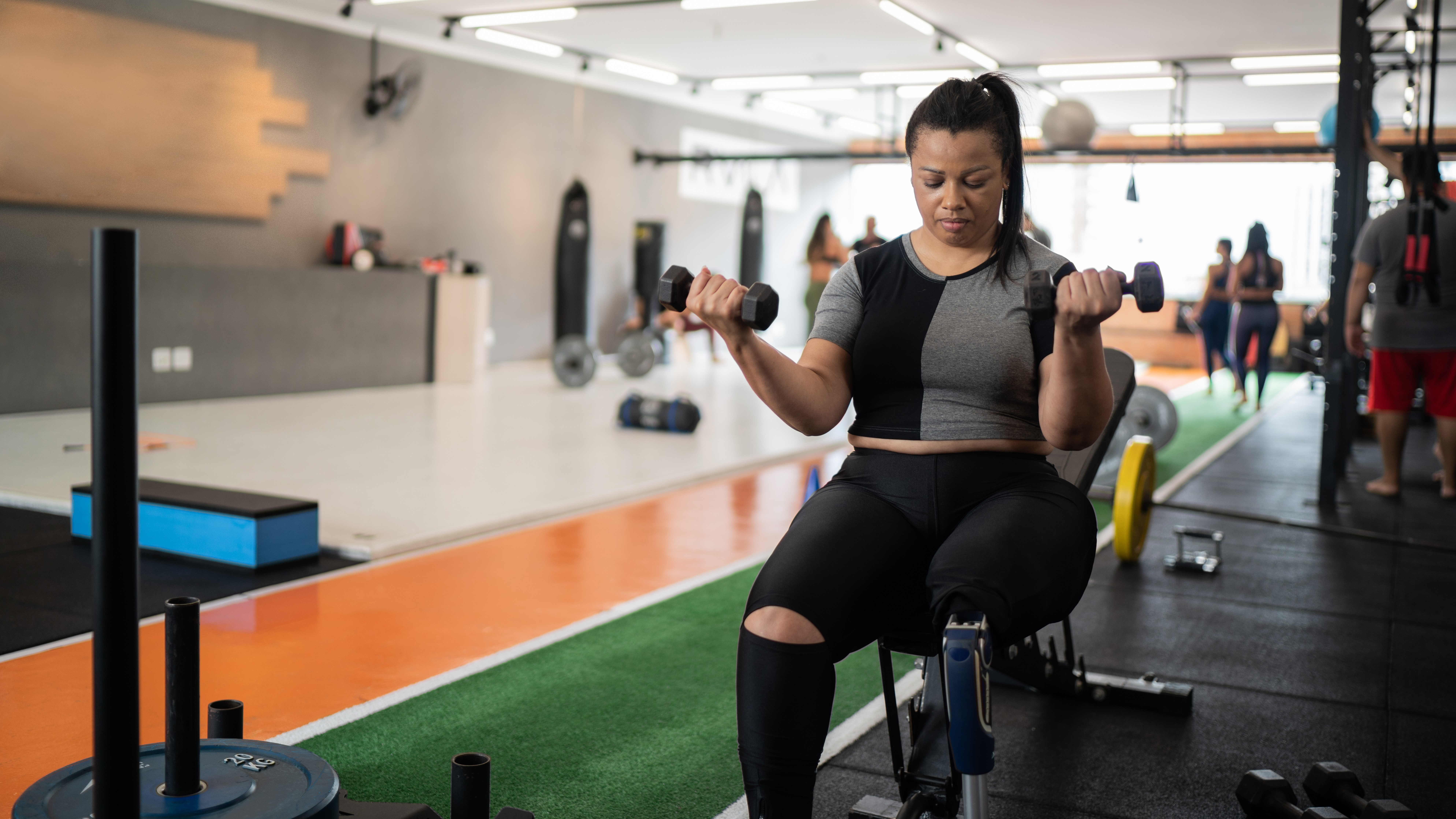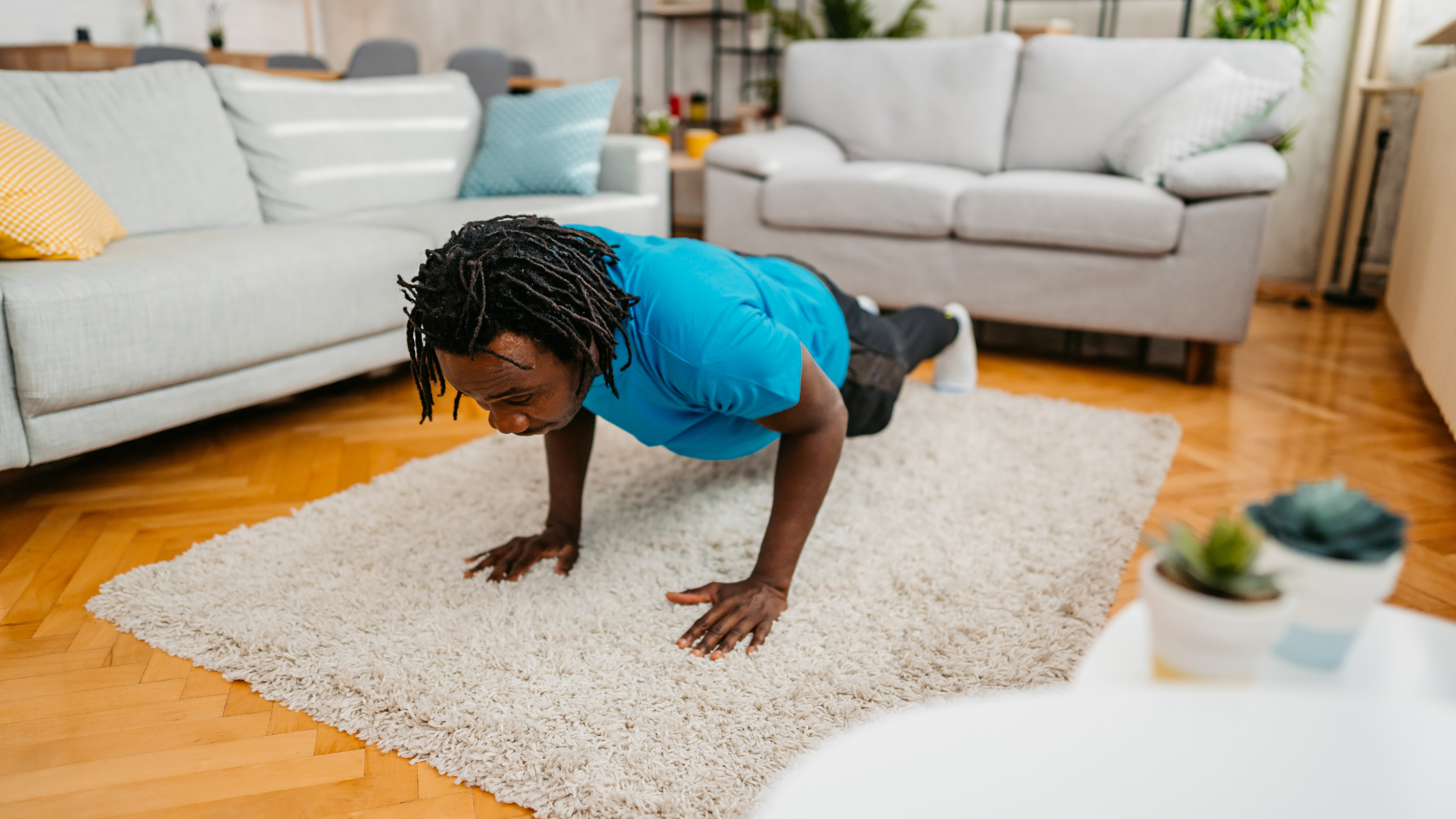
The mind-muscle connection is a way of developing awareness of different parts of your body, partly to help you perfect your technique and get the best results while working out, but also as part of a mindfulness practice.
If you've been trying to build muscle, you may spend hours in the gym with some of the best kettlebells and plan your meals with precision, yet it can be slow progress. This is where a stronger mind-muscle connection can help.
It's the practice of a conscious, focused contraction of the muscle during exercise. By focusing on the working muscle, we can engage it better, explains Dr Kelvin Fernandez, a physician and healthcare educator at Ace Med Boards.
“The mind-muscle connection is the bridge between our mental processes and physical efforts. It's a concept rooted in our neuro-muscular system — the link between our brain and muscles. When you lift a weight, your brain sends signals via motor neurons to your muscles, telling them to contract,” he says.
But is it really the key to faster muscle growth? And if so, how do you improve it? We asked experts, including Dr Fernandez, to help us explore what the mind-muscle connection is, the benefits of strengthening it, and how you actually go about increasing the mind-muscle connection.
Dr Kelvin Fernandez is a physician and healthcare educator at Ace Med Boards, an online tutoring service for students seeking to raise their medical board exam scores. He graduated from Universidad Iberoamericana School of Medicine and lives in Newark, New Jersey, in the US.
What is the mind-muscle connection
To understand the mind-muscle connection, first we need to explain what attentional focus is. According to a review in the journal Frontiers in Sports and Active Living, attentional focus in sports is the ability of an athlete to allocate their mental resources to specific cues.
Athletes can either pay close attention to a particular stimulus (association) or try to take their minds off it (dissociation). The cue could be internal — such as muscle contraction or breathing — or external, like music, a race's finish line, or a timer.
Start your week with achievable workout ideas, health tips and wellbeing advice in your inbox.
The mind-muscle connection is a type of internal association, where you create an association between a muscle movement and how it feels. This improves your awareness of your posture and ensures your focus is on the task in hand rather than engaged in other thoughts or daydreaming.
What does the mind-muscle connection feel like?
To most people, dissociation comes naturally. Internal association, however, is something that you gain as you train, and not something you’re born with, Maria Vazquez, a certified personal trainer based in Buenos Aires, Argentina explains.
“The mind-muscle connection is all in your head, but it’s not the same as being present. With yoga, for example, the connection with the mind is about relaxation, controlling your movement and focusing on your breath.
"When you’re lifting weights, you're not trying to relax and go with the flow. You’re trying to control muscle contraction, and it’s not easy. The mind-muscle connection is something that you can start practicing with simple exercises and then, as you get better at it, progress to more advanced movements,” she says.
Maria Vazquez is a certified personal trainer living in Buenos Aires, Argentina. A former software engineer in Los Angeles, she traded IT for the fitness industry. Vazquez specializes in functional fitness, strength training and HIIT, and is an avid runner, biker, and a mother of two.
What are there benefits of a stronger mind-muscle connection?
Focusing on the mind-muscle connection while lifting weights may increase the activity within a targeted muscle. Crucially, this happens without decreasing engagement from other muscles, according to a review published in the Strength and Conditioning Journal.
This aspect of training the mind-muscle connection may be particularly helpful in physical therapy. “During physical therapy, you need to be aware of your body, how it moves, and how your muscles are recruited during exercise and daily activities, too. You have to put in the work to get better,” Vazquez notes.
Paying close attention to muscular contractions may lead to better musculoskeletal health too, Fernandez says. “The mind-muscle connection is also a tool for injury prevention. When you're more in tune with your body, you're less likely to overdo it and end up on the sidelines,” he explains.
On the other hand, internal association may be counterproductive when applied to activities other than weightlifting, according to a 2019 review in the Frontiers in Sports and Active Living, with researchers suggesting that focusing on a single muscle during jumps and cardio exercise could affect your balance or performance.
“When you run, you want to think about everything but your muscle contractions. Otherwise, it’s a torture. You want to be relaxed and focused on putting on the miles, rather than controlling your body,” says Vazquez.
How do you increase the mind-muscle connection?

Improving this mind-muscle connection isn't a mystical process — it's a science with a dash of discipline. Mind-muscle connection, as with any skill, can be cultivated and improved upon, but it takes time and practice, and is a bit like learning how to meditate.
“It begins with mindfulness, paying attention to each movement you perform, and visualizing the muscle at work,” explains Fernandez. However, everyone is unique, so it's all about exploring, experimenting with different techniques, and finding what makes your own muscles tick, according to Fernandez.
For Vazquez, the main principle of improving the mind-muscle connection is a lack of distraction. “A lot of the times when we are training we're daydreaming, listening to music or paying attention to our phones.
"Try to focus on what you're doing, learn how painful it is, and try to make the best out of it,” she says. If you're looking for an accessible way to strengthen your mind-muscle connection, here are a few ways to get started.
1. Practice during daily activities
“The more you do it, the better you get at it,” says Vazquez. “The mind-muscle connection is something you can train on a daily basis. For example, when you grab a coffee, take your time, really squeeze the cup and feel how your muscles contract.
"Of course, you're not going to build muscle by grabbing a cup of coffee, but you will establish a better connection between your brain and the muscle,” she says.
2. Use simple exercises
“If your training routine is too difficult, you’ll not be able to sustain it, and you’ll not reap any benefits. Same goes with improving the mind-muscle connection: it’s easier to start with simple exercises, the ones that you can easily control,” Vazquez says.
“If you do a single-joint exercise, such as a biceps curl or a leg extension, and you're focusing just on that single movement, it’s easier to make that connection between your brain and the muscle.
"If you do a multi-joint exercise, such as a squat, it's harder, because there are many muscles involved, and you will also have to focus on your form, posture and coordination,” she says.
If you do want to improve your mind-muscle connection with multi-muscle compound exercises, focus on one muscle or one muscle group. “For example, when you’re squatting, bring your awareness to contracting just your glutes,” Vazquez suggests.
3. Use visualization techniques
“Beginners may struggle with targeting the muscles selectively. For example, when I say ‘engage your core’, they may not know what that means. So, for those who do not have enough strength and body awareness, I’d recommend using visual cues,” advises Vazquez.
“When we're doing a push-up or a plank imagine you have to squeeze and push down a giant ball. Or when you’re pulling or pushing, imagine you're pulling a lever that is much heavier than the weight that you're carrying. Use images, actions or situations to better recruit your muscles,” she says.
This will make a big difference to your training, as your core muscle connects your upper and lower body, is responsible for your balance and stability, and can even help with recovery by promoting circulation and blood flow.
But it also plays a crucial role in every day activities, and other types of exercise like yoga and Pilates. Both practices strengthen your core and are a great way to develop the mind-muscle connection, particularly during a core yoga session, where small adjustments can make a big difference to the pose.

Anna Gora is a Health Writer for Future Plc, working across Coach, Fit&Well, LiveScience, T3, TechRadar and Tom's Guide. She is a certified personal trainer, nutritionist and health coach with nearly 10 years of professional experience. Anna holds a BSc degree in Nutrition from the Warsaw University of Life Sciences, a Master’s degree in Nutrition, Physical Activity & Public Health from the University of Bristol, as well as various health coaching certificates. She is passionate about empowering people to live a healthy lifestyle and promoting the benefits of a plant-based diet.
